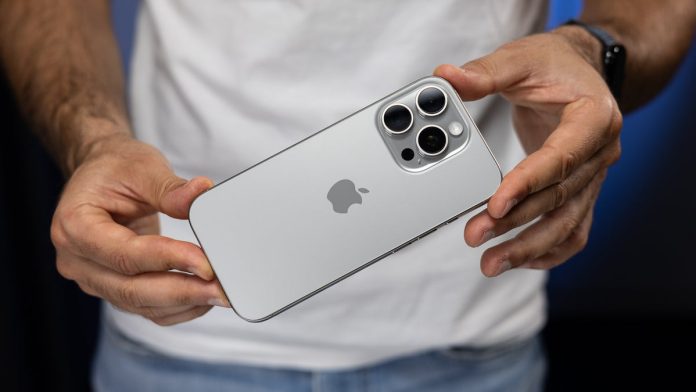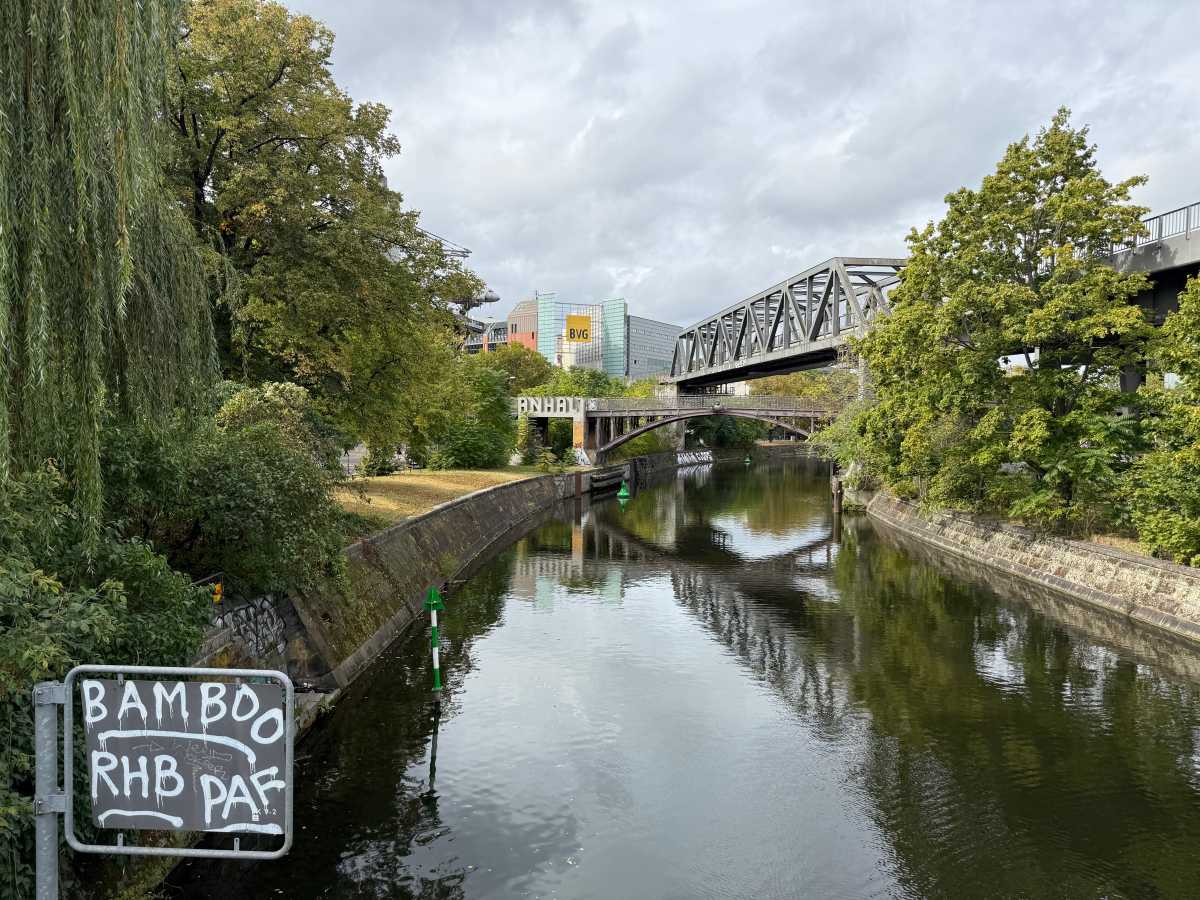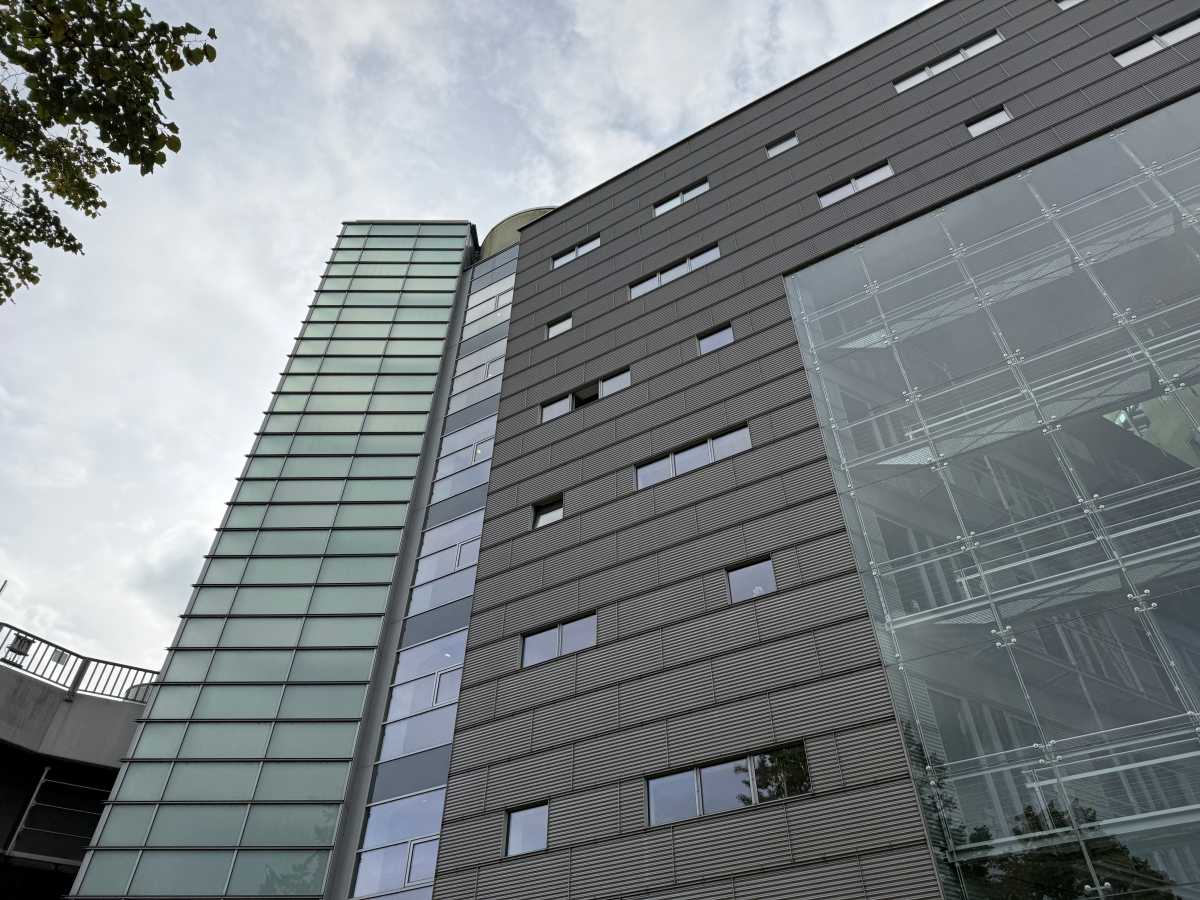From the exterior, the iPhone 16 Pro Max appears to be a small enhancement of its predecessor, particularly since the design has mostly remained intact.
However, with its 6.9-inch display and titanium body, it is larger, heavier, and slightly more robust than the iPhone 15 Pro Max. Of course, there is the new Camera Control button, which is a physical button.
Spend some time with Apple’s 2018 flagship, and you’ll notice many improvements (mainly on the inside) that will have a substantial impact on how you use the device, particularly if you’re into photography or the most recent AI features.
While the A18 Pro chip transforms this phone into a raw performance beast, Apple has invested much on Apple Intelligence, its answer to artificial intelligence. The Camera Control button and forthcoming Visual Intelligence capabilities demonstrate Apple’s aim to revolutionize how we interact with the world through our phones.
Design & Build
- Noticeably thinner bezels
- Titanium build is premium, durable, and aids in heat dissipation
- Camera Control button is innovative but questionable
The iPhone 16 Pro Max follows Apple’s recent design approach, with only minor changes. It has a premium appearance, with smoother corners and Natural Titanium color options that clearly influenced the Pixel 9 series.
This year’s new color option is Desert Titanium, a goldish shade that has split the internet. While the phone appears remarkably identical to the iPhone 15 Pro Max at first glance, there are a few variances.
Thinner bezels around the screen make the already large display appear even larger. Despite the enormous 6.9-inch display, Apple has kept the iPhone nearly the same size as last year’s model, giving the impression that you’re holding more screen than phone.
The Super Retina XDR OLED panel extends farther into the corners, providing a more immersive visual experience for gaming and video consumption.
This time around, the titanium body, which consists of a grade 5 titanium frame over a graphite-clad aluminum substructure, has been developed further. It provides the device a high-end feel while also boosting heat dissipation. The iPhone 16 Pro Max’s edges have been softened, making it more comfortable to handle for extended periods despite its greater size.
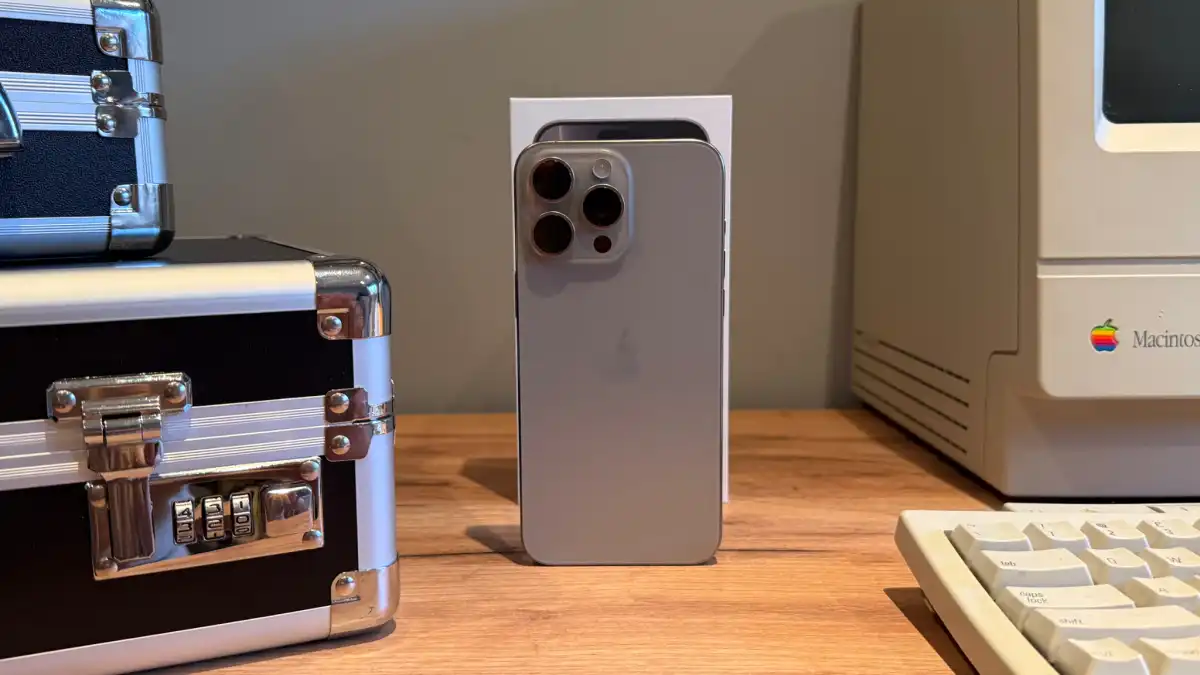
Despite being 6g heavier than the iPhone 15 Pro Max, I noticed little difference in handling. However, if you are used to normal phones, this 227g smartphone may come as a surprise.
The bigger display size is also instantly noticeable. For me, it finds the ideal mix between weight and build quality: this is a phone that feels sturdy but not bulky.
One new feature I like is the Camera Control button, which Apple claims isn’t really a button but is. It sits recessed, providing gesture control and a rapid camera activation, similar to the Action button introduced last year.
For me, the iPhone 16 Pro Max strikes the perfect balance between weight and build quality
I’ll go into more detail on the Camera Control later, but here are some initial thoughts. While I find the Camera Control handy for photos, it occasionally conflicts with the Action button for importance. Apple may need to reconsider the use of the older Action button in future revisions, as it appears underutilized in comparison to this current functionality.
Screen & Speakers
- 6.9-inch Super Retina XDR OLED with 120Hz
- Great outdoor visibility with 2000 nits of peak brightness
- Stereo speakers provide clear, loud sound with decent bass
The 6.9-inch Super Retina XDR OLED display is Apple’s largest yet, and it’s stunning. The smaller bezels provide greater screen real estate without considerably increasing the device’s physical size.
The display isn’t as pixel-dense as the Samsung Galaxy S24 Ultra (505ppi), but Apple’s color accuracy and HDR capabilities make any inadequacies difficult to discern. Apple has retained its wide color range, which means colors are extremely vivid while remaining natural and true to life.
With a peak brightness of 2000 nits outside and a new 1 nit low setting for nighttime use, it’s clear why this is one of the greatest displays on the market. Whether I’m streaming Netflix or playing a game, the graphics are brilliant and fluid, owing to ProMotion’s 120Hz refresh rate. And the new support for 1 nit of brightness comes in particularly handy when using my phone in bed at night.

This 6.9-inch Super Retina XDR OLED display is Apple’s largest yet, and it’s a beauty
The 1 nit support still extends to the Always-On Display, which allows you to monitor alerts, the time, and other widgets without fully unlocking the phone. It also intelligently dims to conserve power when not in use. While I don’t use the Always-On Display, it became a popular feature after its introduction a few years ago.
Then we come to the stereo speakers. While not significantly improved over the previous iteration, the iPhone 16 Pro Max still produces strong, clean sound with good bass. For a phone of this size, it’s a startling audio instrument.
Specs & Performance
- Powered by the A18 Pro chipset – up to 20% faster than last year
- Great for gaming and multitasking
- 8GB RAM is low compared to competitors, but performs well due to optimisation
The iPhone 16 Pro Max is powered by Apple’s latest and greatest A18 Pro processor, which represents a significant improvement over the A17 Pro, notably in terms of AI performance and graphical capability.
According to Apple, it boasts a 15% faster CPU and 20% faster GPU than the previous year’s model. I cannot verify such stats, but I can say that it provides blisteringly fast performance across the board. This applies whether you’re editing 4K video, playing the latest AAA mobile games, or simply switching between apps.
It also features a 16-core Neural Engine, which allows for more powerful machine learning and AI capabilities. It is a significant role in making these devices capable of the entire spectrum of Apple Intelligence features, which I will discuss in greater detail later.
Gaming lovers will be pleased to know that the iPhone 16 Pro Max supports ray tracing at double the speed of the A17 Pro, resulting in more realistic lighting and reflections in iOS games. During my tests, the device handled everything I threw at it, including graphically intense games like Death Stranding and video editing using Adobe Premiere Rush.
The A18 Pro handled everything with ease, however the device did become little warm after extended gaming sessions. However, it was substantially less heated than the iPhone 15 Pro Max.
For an additional test, I configured both phones to record 4K videos for approximately 30 minutes. Then, with a laser thermometer, I measured how heated both devices became across the area where the processor sits. The iPhone 16 Pro Max was 3-4°C cooler than the 15 Pro Max.
While competitors such as the Samsung Galaxy S24 Ultra and Google Pixel 9 Pro XL provide up to 12GB of RAM, Apple’s iPhone 16 Pro Max has only 8GB. However, Apple’s proprietary optimization guarantees that the iPhone operates extremely smoothly, even while performing heavy tasks or multitasking. Storage options range from 256GB to 1TB, providing ample room for apps, games, photographs, and movies.
Apple iPhone 16 Pro Max benchmarks
The iPhone 16 Pro Max is undeniably powerful. It provides all of the performance you could want and more. In fact, it scores higher on Geekbench 6 than the M1 MacBook Air from late 2020, with 3518 for single-core and 8378 for multi-core.
I was impressed by how quick and responsive everything felt, from multitasking to gaming and watching videos. There is nothing I could do to cause this device to freeze, slow down, or start dropping frames.
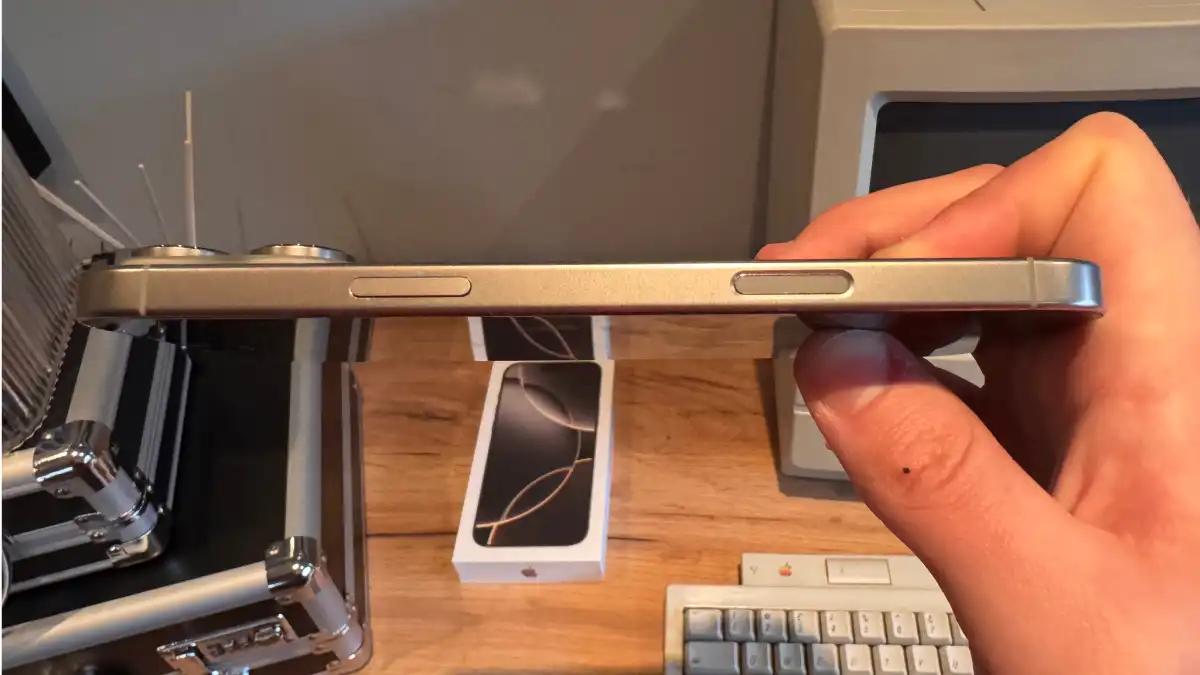
The iPhone 16 Pro Max outperforms the Samsung Galaxy S24 Ultra (Snapdragon 8 Gen 3) with 2,273 single-core and 7,056 multi-core, as well as the Google Pixel 9 Pro (Tensor G4) with 1,950 single-core and 5,950 multi-core. The raw power of the iPhone 16 Pro Max is simply unrivaled.
There’s no denying that the iPhone 16 Pro Max is an absolute powerhouse. In fact, it actually clocks up a higher Geekbench score than the M1 MacBook Air
Cameras
- 48Mp main camera, 48Mp ultrawide, 12Mp 5x telephoto
- Camera Control button offers gesture-based camera controls
- 4K 120fps slow-motion video, and new AI audio features
Apple has always placed a big focus on photography, and the iPhone 16 Pro Max is no exception. While the camera specifications may appear familiar, Apple has made significant hardware and software enhancements, resulting in one of the most capable camera systems available.
The 48Mp Fusion camera and 48Mp Ultrawide camera steal the show here. Apple changed the sensor beneath the main camera, resulting in faster autofocus and better low-light performance. Even under difficult lighting circumstances, the iPhone 16 Pro Max produces detailed images without oversaturating colors or adding noise.
The ultrawide lens has been improved to 48Mp for the first time, resulting in crisper, clearer photographs at wider angles. This is especially excellent for landscapes, architecture, and group photographs. The increased macro capabilities are also noteworthy, making it simpler to capture fine details without losing clarity.

The 12MP telephoto camera with 5x optical zoom also includes tetraprism technology, which helps to reduce distortion even at higher zoom levels. While feature was unique to the iPhone 15 Pro Max last year, it is now accessible on the smaller iPhone 16 Pro.
I found the zoom performance to be superb, especially when photographing faraway scenes, where image stabilization helped keep everything sharp and steady. When compared to competitors such as the Samsung Galaxy S24 Ultra, which has a longer zoom range, the iPhone still outperforms with better color fidelity and dynamic range.
However, I wish the telephoto lens had received a higher resolution improvement as well. Xiaomi’s new Mix Flip foldable eschewed the ultrawide lens used by the Galaxy Z Flip 6 and others in favor of a telephoto lens – simply because the zoom lens is more commonly used. I believe the same is true with iPhones. Perhaps the iPhone 17 Pro Max will receive a more significant upgrade?
Even in challenging lighting conditions, the iPhone 16 Pro Max captures impressive detail without oversaturating colours or introducing noise
There are plenty of different modes to choose from as well. Portrait photographs appear extraordinarily realistic and clear, with detail and sharpness retained when you zoom in. This is true for both the back camera and the selfie snapper. The night mode is truly amazing, with image processing typically selecting for more realistic color over more sharpness.
If you merely want to point and shoot images, the iPhone camera app is likely the finest option. And with faster apertures on all of the cameras, snapping photos is faster than ever – something you’ll notice if you’re attempting to capture anything moving or want to take a lot of back-to-back photographs.
One of the most fascinating new features is the Camera Control button. This touch-sensitive feature allows you to access several camera modes via gestures. While it took some getting used to, I found it quite useful for photography on the fly, especially when I was doing something or only had one hand free. You can change the zoom and depth of field, or even switch lenses, without ever touching the screen.
Of course, you can still do all of this from your screen. And, when taking images in general, it may be more convenient not to use Camera Control. My other major complaint is that when your iPhone is turned off, you have to push the button twice to access the camera. Press it once to swap your device on first.
Visual Intelligence looks compelling as a Google Lens alternative, but this isn’t available at the time of writing (even on the beta software I was running).
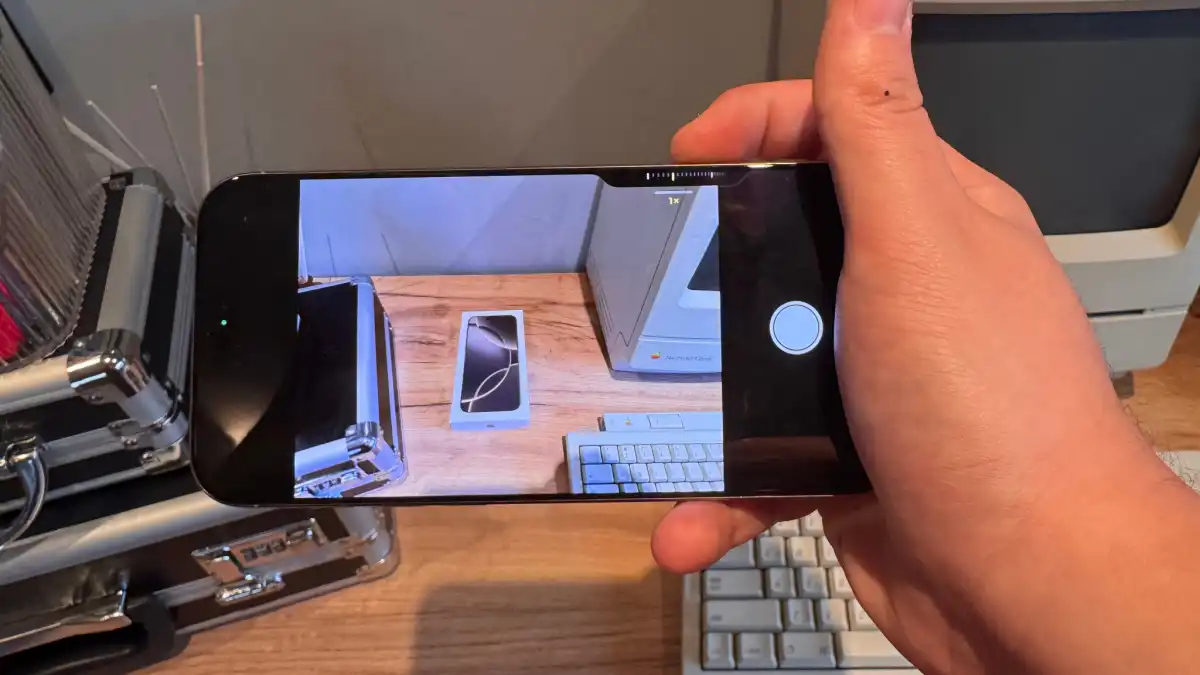
The iPhone’s video capabilities have also been enhanced, including 4K 120fps recording and Dolby Vision. I captured some slow-motion footage at 120fps, and the results were stunningly smooth.
Apple has even launched AI-powered Audio Mix tools, which are particularly handy for real-time editing. Whether I was editing videos for social media or for more professional purposes, the iPhone 16 Pro Max’s combination of cinematic video and studio-quality audio features made it a true media powerhouse. The noise reduction isn’t as effective as I’d want, but it’s still better than not being there at all.
Battery Life & Charging
- Long-lasting battery life of 14-16 hours with typical use
- Apple has stayed quiet on the mAh number
- Faster MagSafe charging and Qi2 support
Apple has considerably enhanced the battery life of the iPhone 16 Pro Max through both hardware and software upgrades. Even with the larger 6.9-inch display, the battery life is great; I was able to get 14 to 16 hours of moderate use on one charge.
In fact, when I attempted to empty the battery in order to test the charging speeds (see below), I found it impossible to get it to zero. A combination of gaming, filming, and gaming did the trick, but it was no simple task.
Of course, Apple would not reveal the actual mAh capacity of the battery, although GSMArena believes it to be 4685mAh. However, the brand claims that this is the largest battery ever seen in an iPhone. So far, my findings appear to be consistent with Apple’s projections.
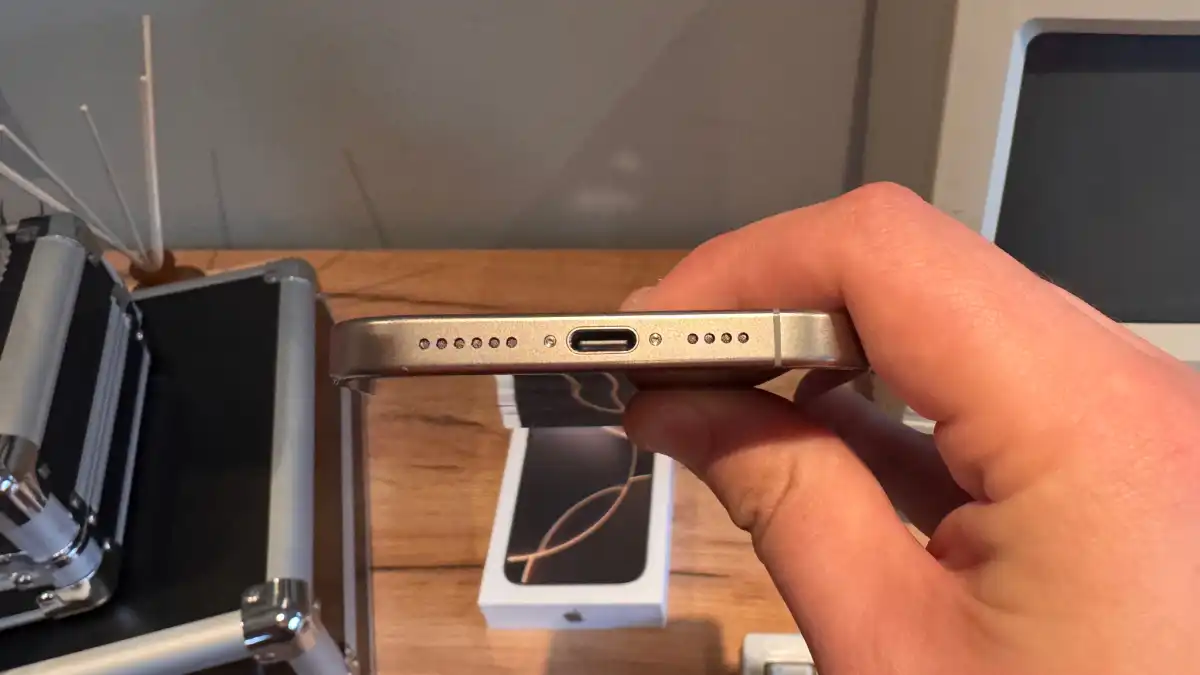
The A18 Pro chip’s power efficiency, which optimizes power usage during less demanding tasks, is principally responsible for the all-day battery performance. Whether I was streaming video, using GPS for navigation, or shooting photos throughout the day, the phone easily made it to the evening with battery life remaining.
Apple has also improved MagSafe charging, which is now faster than ever before. Apple claims that the phone can charge up to 50% in 30 minutes with a 30W charger, which is excellent for a battery this size. In my tests, it outperformed that, going from 0 to 50% in 28 minutes. Also, this year, the USB-C port was upgraded to Thunderbolt 4, allowing for quicker data transfer.
It also supports Qi2 wireless charging, ensuring its future compatibility as more third-party charging pads embrace the new standard. Though USB-C is now the standard for charging, the iPhone 16 Pro Max can also charge other devices, such as AirPods or an Apple Watch, via reverse wireless charging.
When trying to deplete the battery in order to test the charging speeds, I actually found it difficult to run the battery down to 0
Software & Apps
- Apple Intelligence shows huge potential, but isn’t available at launch
- New iOS 18 features like Math Notes and AI Writing Tools are useful
- Impressive seven years of software support
The iPhone 16 Pro Max includes iOS 18 out of the box. And, while Apple’s Apple Intelligence features rely largely on AI, they are not available out of the box.
The first of these will be included in iOS 18.1, which is currently available for public beta download ahead of its October release. However, many of the most anticipated AI capabilities won’t be completely available until later upgrades, making the software experience feel like it’s in transition.
For this evaluation, I installed the iOS 18.1 beta to test Apple Intelligence, which anyone may do. Ordinarily, I would say you can’t review anything that isn’t on the device. However, since anyone may technically have Apple Intelligence, I will include it in the review.
The advertisement of Apple Intelligence but exclusion of the features out of the box is disappointing to see from Apple
Just keep in mind that no Apple Intelligence features will be included out of the box, and only the features listed below have been confirmed for an October release. Rumours claim that the other functions will be available by February/March of next year, however Apple has not confirmed this.
Apple’s pitch for Intelligence, but the lack of out-of-the-box functionality, is disappointing. The brand is recognized for providing features slightly later than competitors, but often outperforms them. Apple Intelligence is heralded as the primary feature of the iPhone 16 lineup, yet it is not yet available, making the marketing feel disconnected.
In the Apple Store, for example, demo iPhone 16 models feature the new Siri UI in advertising videos. However, when you actually use Siri, the old interface appears. Things feel rushed, which is unlike Apple.
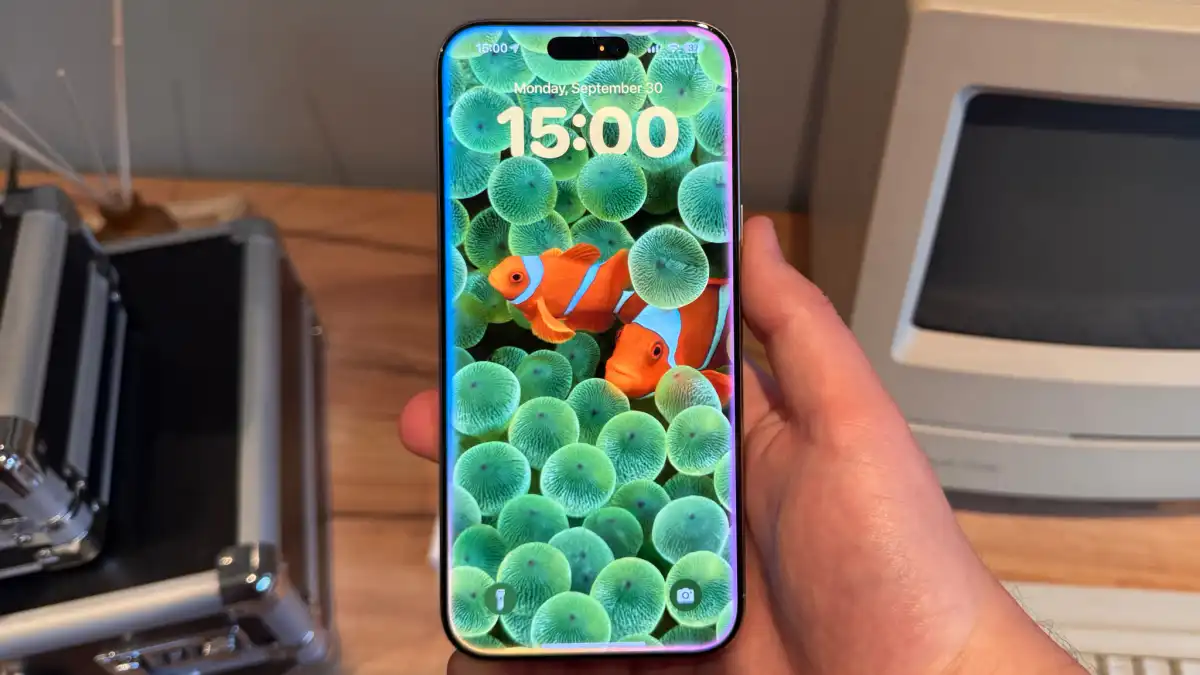
Siri has seen considerable improvements, becoming more responsive and communicative. When engaged, the new design takes over the entire screen, creating a more immersive experience.
Siri is now more adept at managing multi-step requests and keeping context between interactions, making it feel more like a true assistant rather just a voice command system. This background will become much more detailed in future versions, which will also feature ChatGPT integration.
Writing Tools in apps like Mail and Messages employ artificial intelligence to assist enhance the tone and clarity of your writing, suggesting ways to make your content more professional or succinct.
You also get notification summaries, which extract the main elements from any app’s notifications so you don’t have to read them all. These operate surprisingly well and may be the best example of AI on a phone. There’s a ‘Reduced Interruptions’ focus mode, which limits notifications to those the ones Apple considers most relevant.
Features such as Genmoji, the Image Playground, ChatGPT integration, and the full Siri upgrade are unavailable. Aside from Apple Intelligence, iOS 18 includes a slew of new features.
iOS 18 has important tools such as Math Notes, which allows you to solve equations right in the Notes app by writing them down. You may also further customize your app icons, including leaving blank spots in your home screen’s app grid for more unique layouts, something iPhone users have requested.
Apple did not disclose how long the iPhone 16 Pro Max will be supported, but based on past models, it will most likely receive updates for at least seven years. That matches the greatest on any Android phone and may perhaps be extended as the time approaches.
Price & Availability
The iPhone 16 Pro Max is expensive, as one would expect from a flagship iPhone. Starting at £1,099/$1,099 for the base model with 256GB of storage, it is the same price as last year’s model, but with new features.
The 512GB version costs £1,399/$1,399. The 1TB version costs £1,599/$1,599.
Should you buy the iPhone 16 Pro Max?
The iPhone 16 Pro Max enhances what Apple does best: elegant design, powerful performance, and great cameras.
The addition of Apple Intelligence and the Camera Control button makes this phone particularly enticing to photographers and anyone seeking AI-enhanced capabilities. The 6.9-inch Super Retina XDR OLED screen is the greatest Apple has ever created, and the A18 Pro chip ensures that the phone will be future-proof for years to come.
However, the full potential of Apple’s AI features is not yet available, and with several features not being released until later this year, some customers may prefer to wait.
Finally, if you want an iPhone that pushes the limits of photography and performance, the iPhone 16 Pro Max is a great option. But it’s also a very expensive one.
Specs
- iOS 18
- 6.9-inch 2868×1320 460ppi Super Retina XDR display
- A18 Pro chipset
- 8GB RAM
- 256GB/512GB/1TB storage
- 48Mp f/1.8 main camera
- 48Mp f/2.2 ultrawide camera
- 12Mp f/2.8 5x telephoto camera
- 12Mp f/1.9 front camera
- 4685mAh battery (reported)
- USB-C fast PD 2.0 charging
- 25W wireless MagSafe charging
- 15W wireless Qi 2 charging
- 4.5W reverse wireless charging
- Wi-Fi 7
- Bluetooth 5.3
- 5G
- IP68 water and dust resistance
- 163 x 77.6 x 8.3 mm
- 227g


